Low carbon heating in domestic buildings - technical feasibility: cost appendix
Cost appendix to accompany the technical feasibility of low carbon heating in domestic buildings report.
3 Cost of low-carbon heating for common dwelling archetypes
The cost of the considered low-carbon heating technologies was investigated for 10 of the most common dwelling archetypes.
The selected archetypes include the 8 most populated archetypes, ranking highest in terms of the portion of the stock they represent. Additionally, the 13th and 22nd archetypes were also considered, as these are the most populated archetypes for which the counterfactual heating technology is oil boiler and electric heating respectively.
The characteristics of the 10 selected archetypes are summarised in Table 14. These archetypes are relatively diversified in terms of dwelling type, size, age and insulation characteristics, but their counterfactual heating technology is gas boiler for the majority of them. All archetypes represent together ~500 thousand homes, capturing ~20% of Scotland’s housing stock.
| Archetype ranking | Property Type | Size | Age | Wall Insulation | Roof Insulation (mm) | Counterfactual | Space heating demand in 2020 (kWh/yr) | Space heating demand in 2040 (kWh/yr) | Hot water demand in 2020 and 2040 (kWh/yr) | Stock |
|---|---|---|---|---|---|---|---|---|---|---|
| 1 | Semi detached | Medium | 1919 to 1991 | CWI | More than 250 | Gas boiler | 10,144 | 8,383 | 2,251 | 111,180 |
| 2 | Flat (other) | Small | Pre 1919 | SWU | None | Gas boiler | 6,345 | 3,272 | 1,426 | 64,389 |
| 3 | Flat (other) | Medium | 1919 to 1991 | CWI | None | Gas boiler | 7,134 | 5,522 | 1,901 | 55,533 |
| 4 | Semi detached | Medium | 1919 to 1991 | CWI | 100 to 250 | Gas boiler | 10,358 | 8,779 | 2,298 | 55,427 |
| 5 | Flat (other) | Small | 1919 to 1991 | CWI | None | Gas boiler | 5,640 | 4,272 | 1,646 | 47,361 |
| 6 | Flat (other) | Medium | Pre 1919 | SWU | None | Gas boiler | 9,608 | 5,747 | 1,854 | 45,069 |
| 7 | Detached | Large | Post 1991 | SWI | More than 250 | Gas boiler | 11,571 | 10,756 | 1,671 | 40,928 |
| 8 | Terraced | Medium | 1919 to 1991 | CWI | More than 250 | Gas boiler | 9,089 | 7,028 | 2,150 | 37,325 |
| 13 | Detached | Large | Pre 1919 | SWU | Room in roof | Oil boiler | 26,130 | 16,148 | 2,956 | 20,288 |
| 22 | Flat (other) | Small | Pre 1919 | SWU | None | Electric storage | 6,321 | 4,312 | 1,420 | 17,245 |
The following sections report the results of this study on the cost of each investigated low-carbon heating technology for the above reported common archetypes. For each technology, the total cost is shown disaggregated into the four main cost components: heating system cost, maintenance cost, additional cost and fuel cost. The technologies labelled in red are those for which the considered archetype is unsuitable, considering fuse limit of 80A and peak specific heating demand of 120 W/m2.
For these outputs the cost of hydrogen from both electrolysis and reforming was assumed to be that of the high demand scenario. The fuel utilised by hybrid heat pumps was assumed to be hydrogen from reforming. 9
3.1 Archetype 1
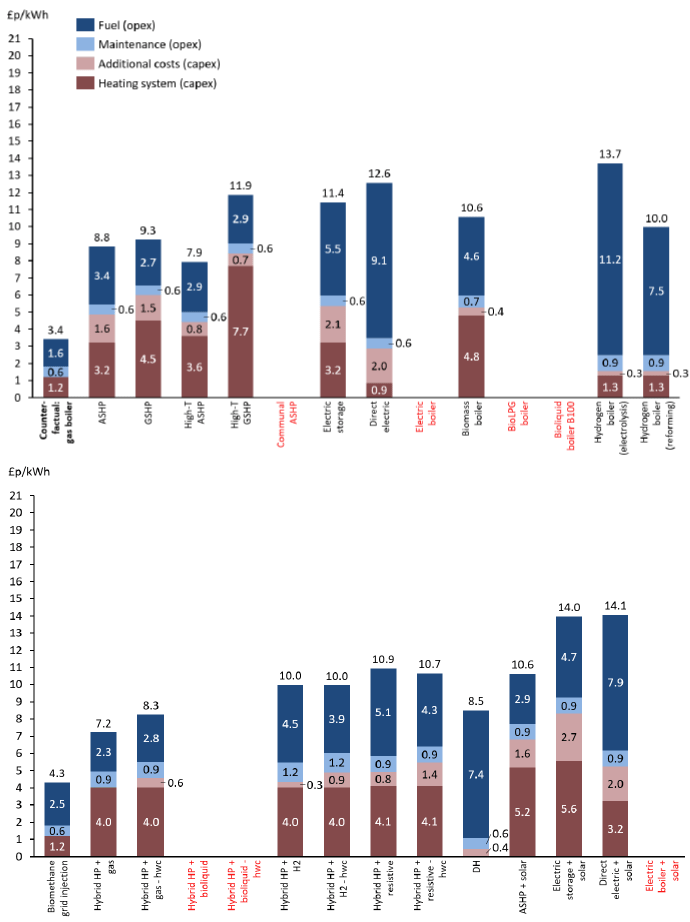
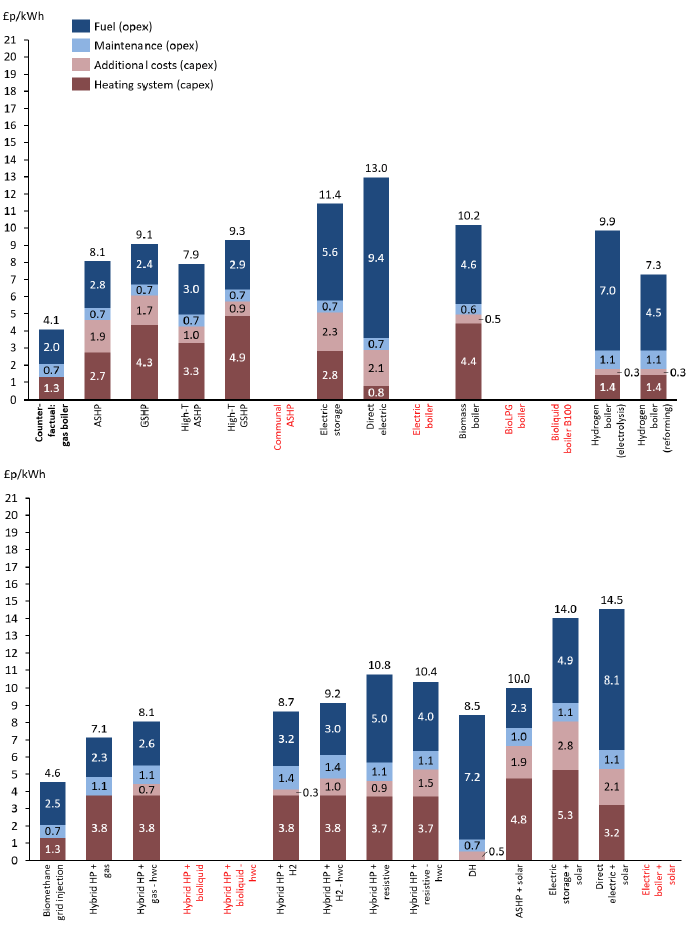
3.2 Archetype 2
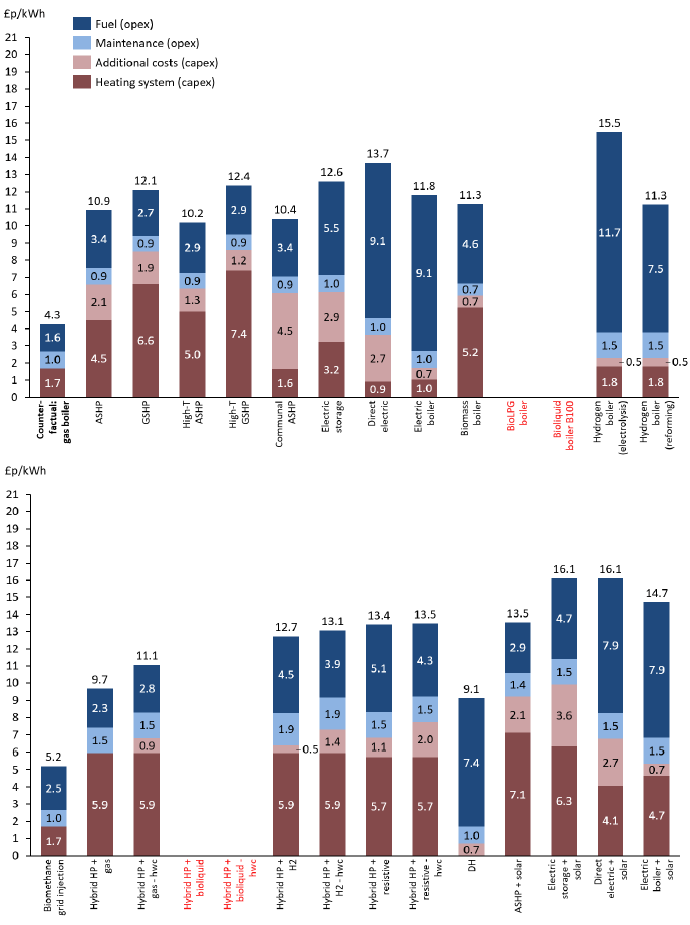
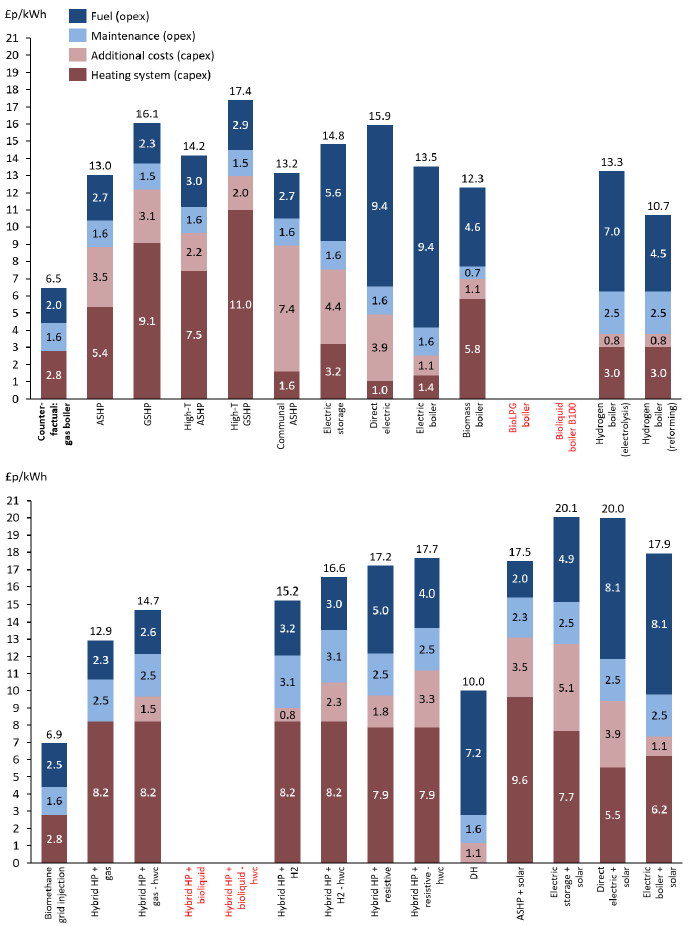
3.3 Archetype 3
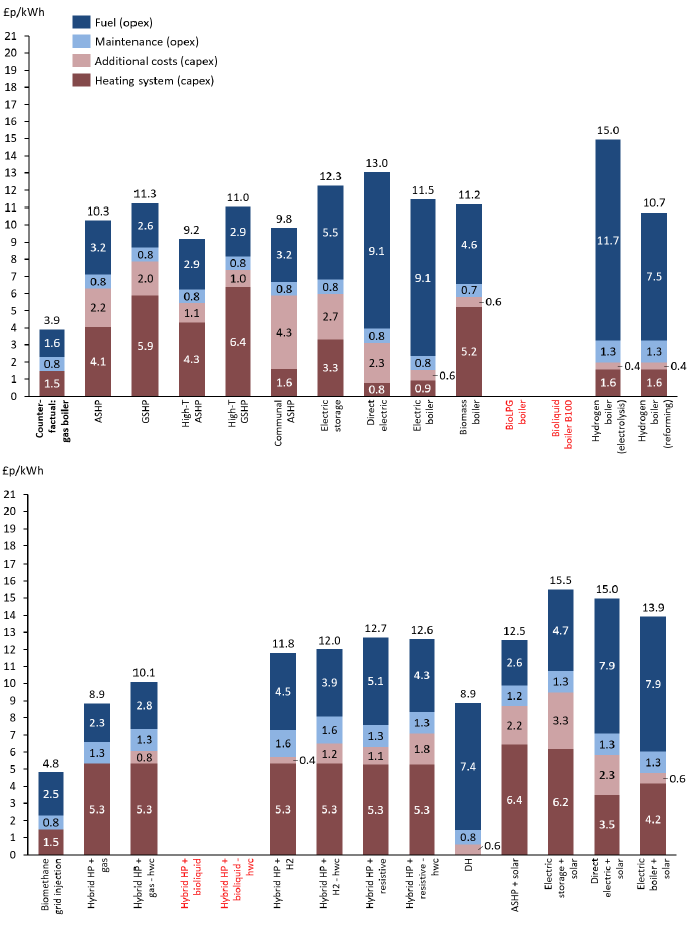
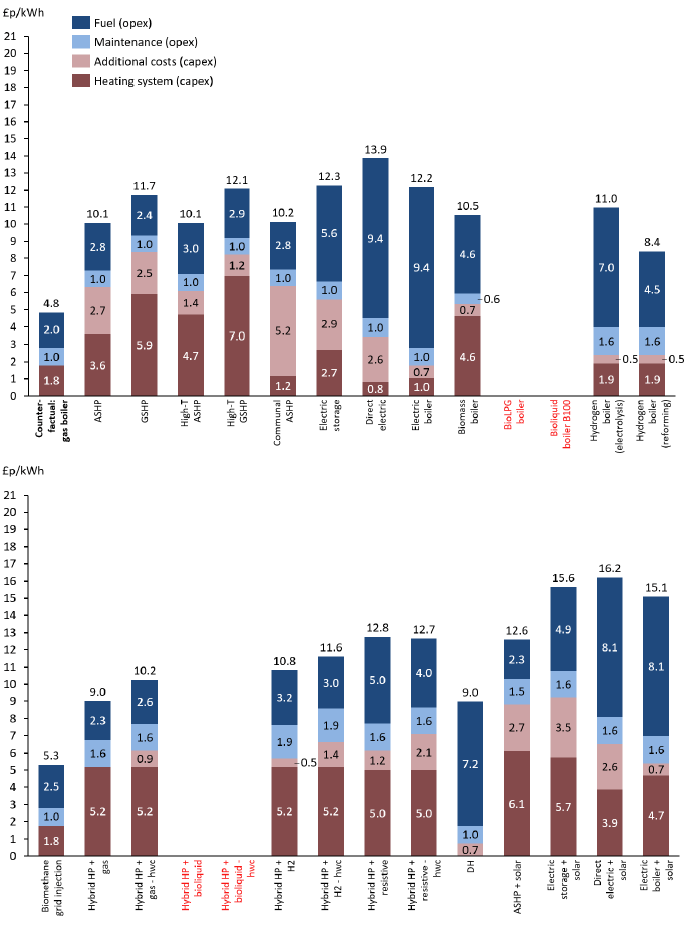
3.4 Archetype 4
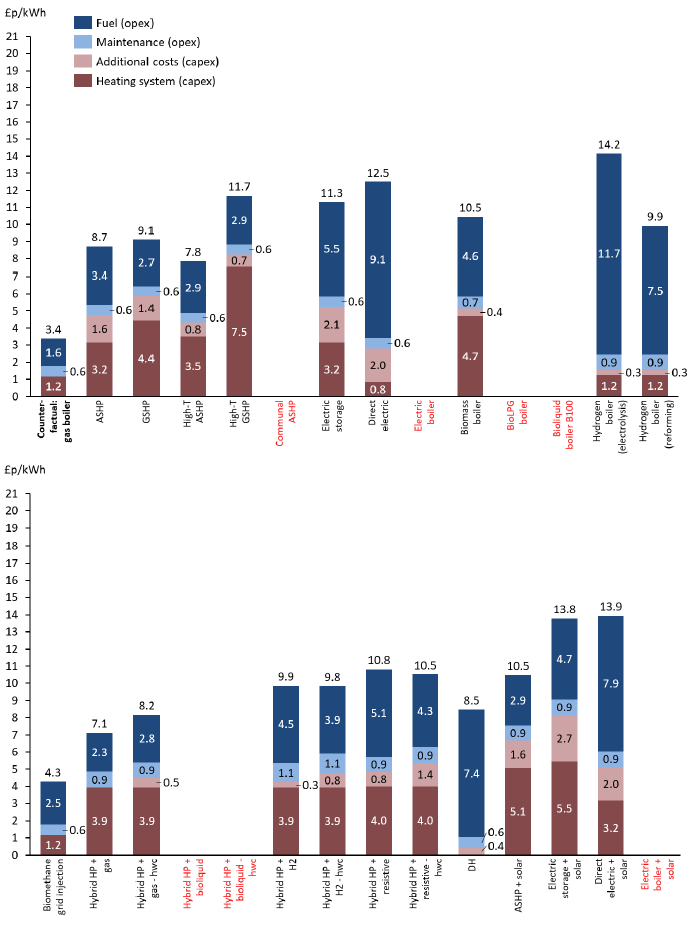
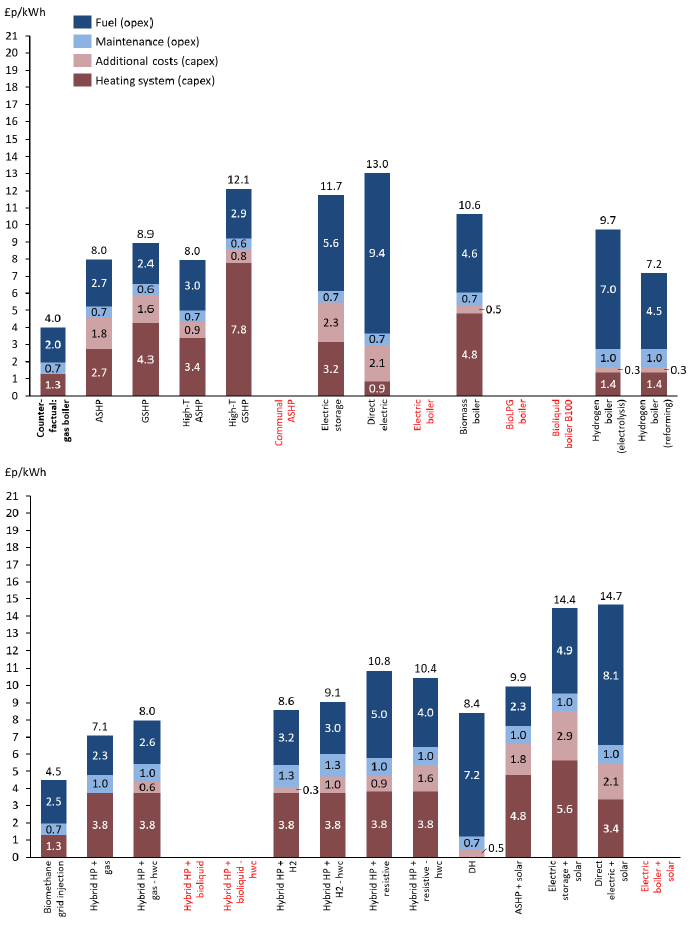
3.5 Archetype 5
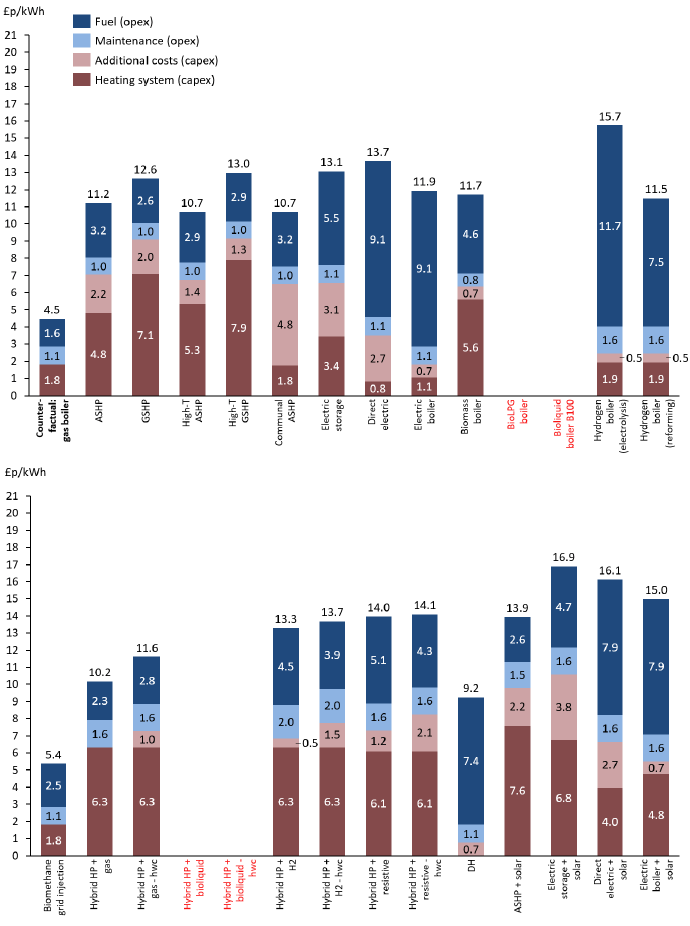
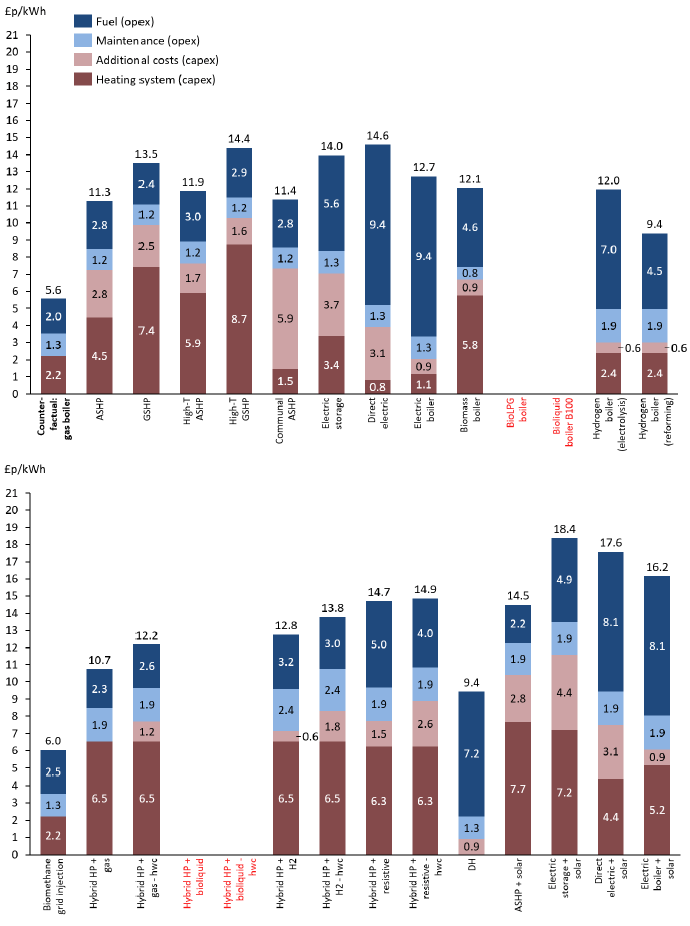
3.6 Archetype 6
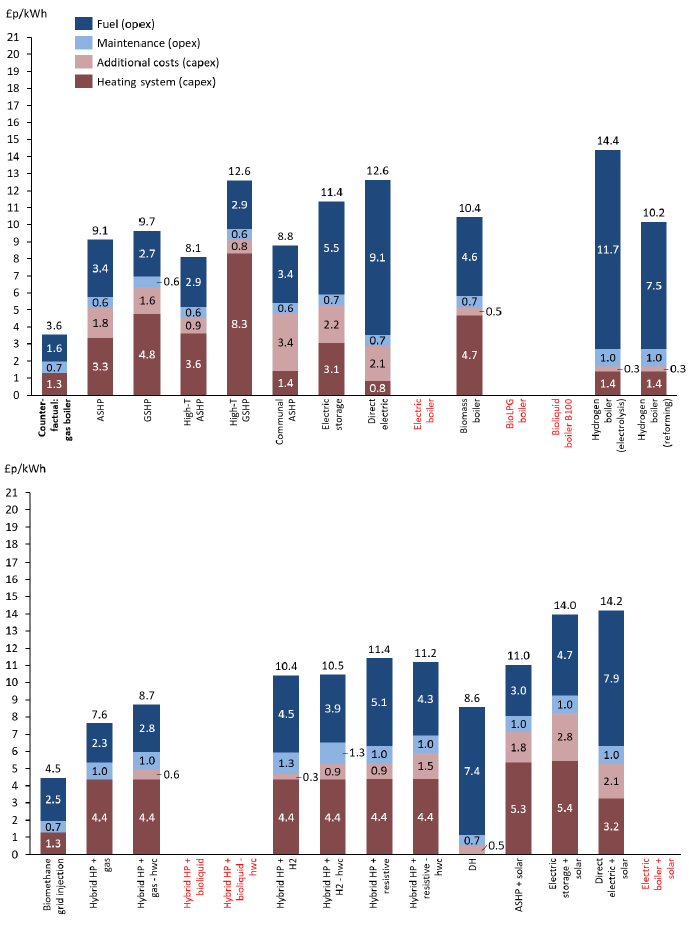
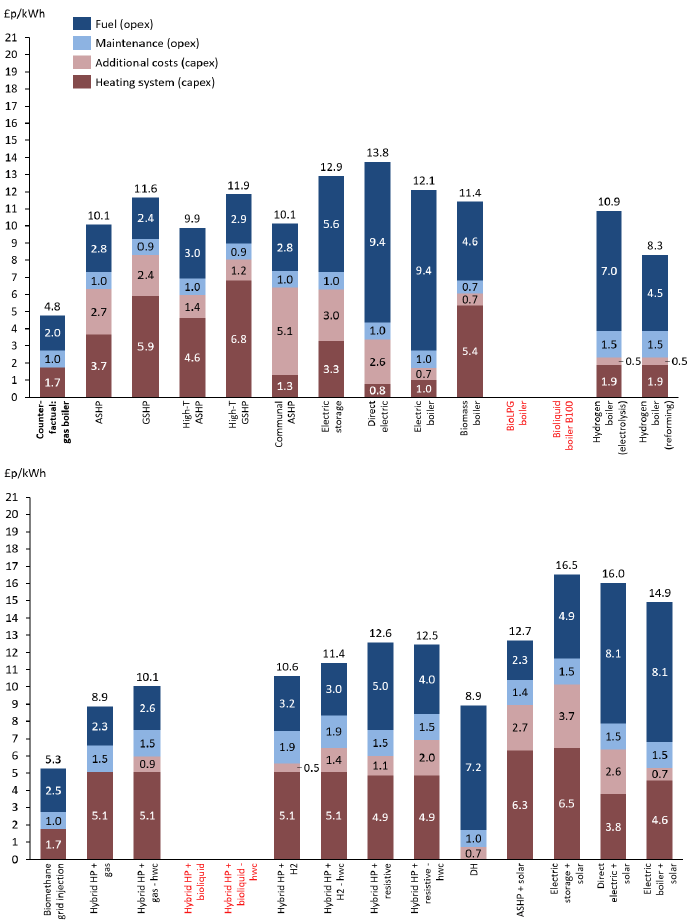
3.7 Archetype 7
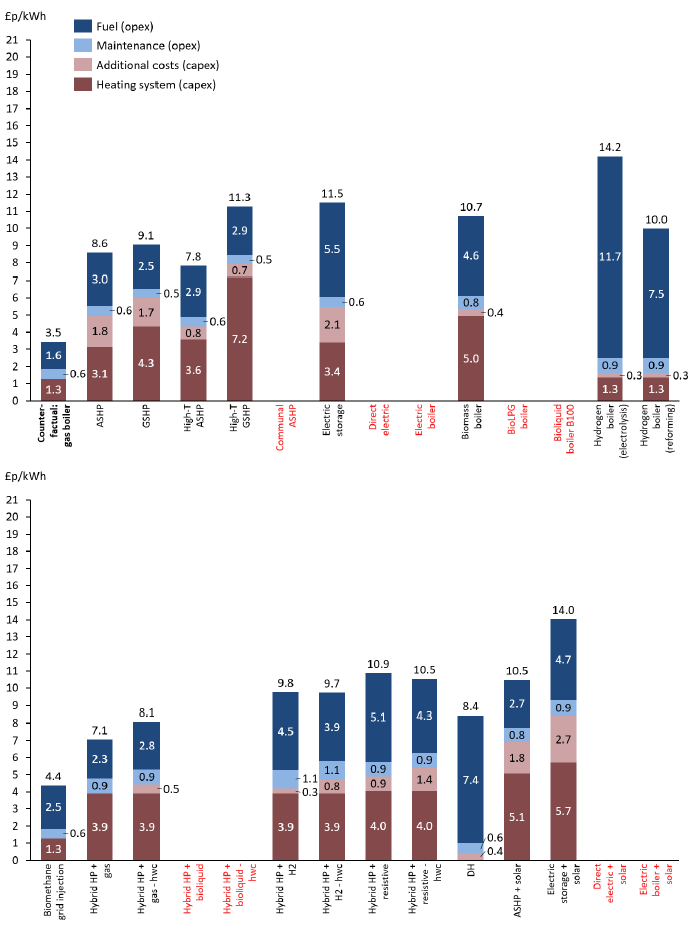
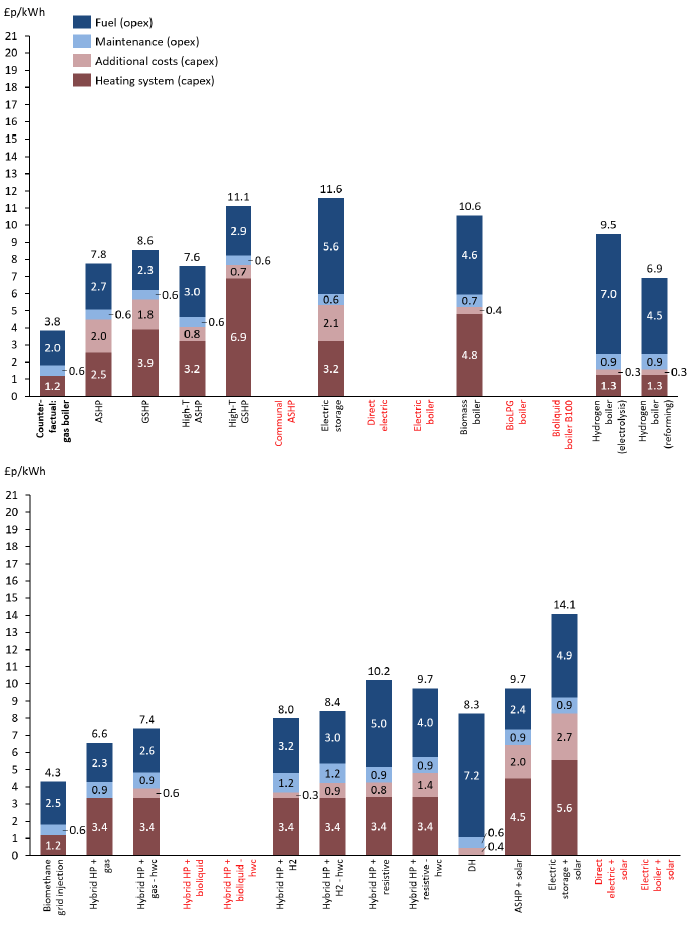
3.8 Archetype 8
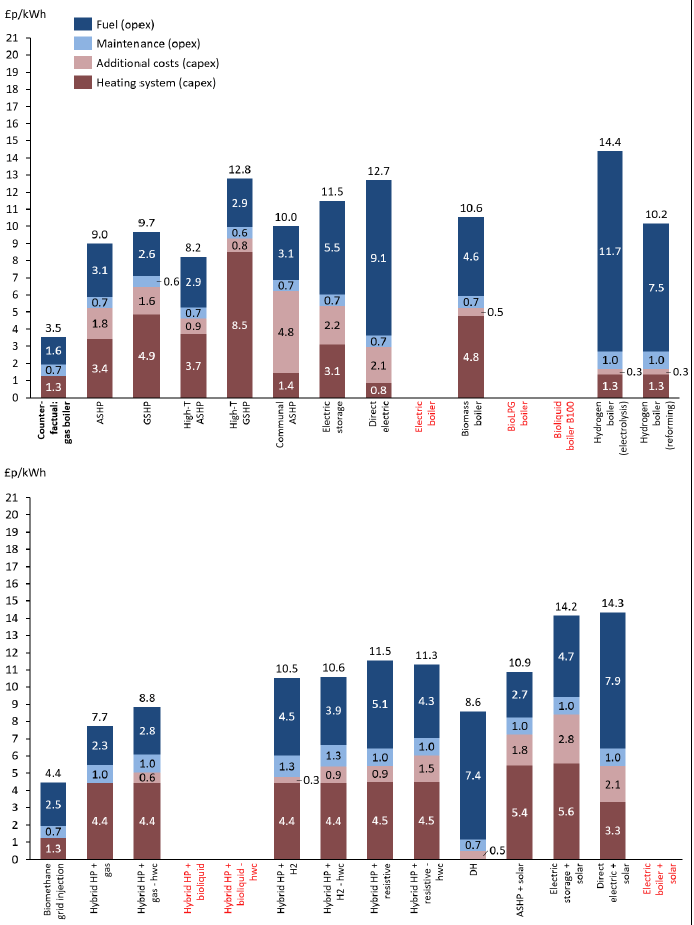
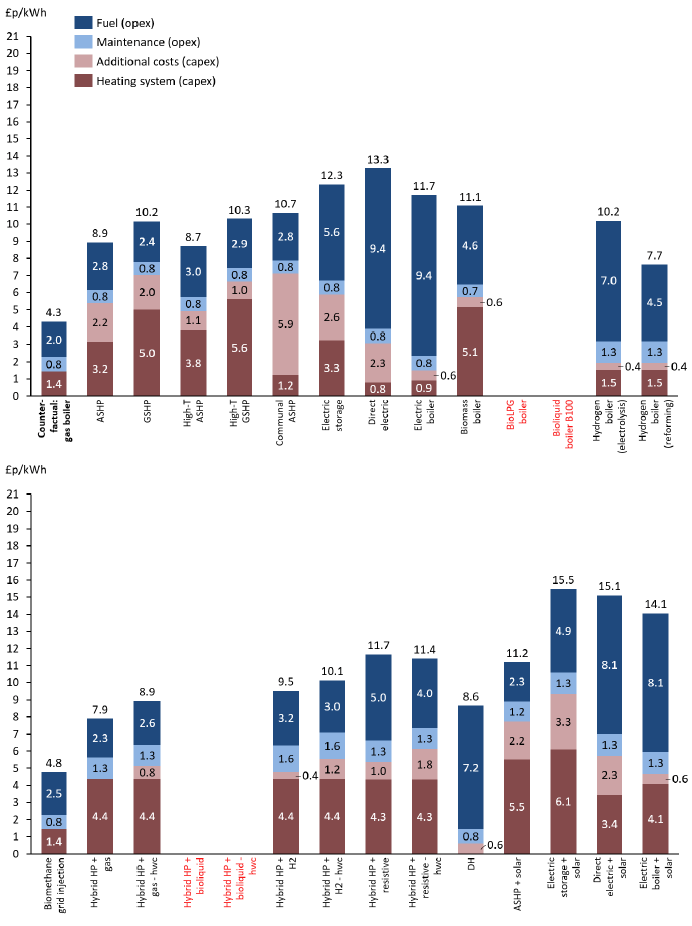
3.9 Archetype 13
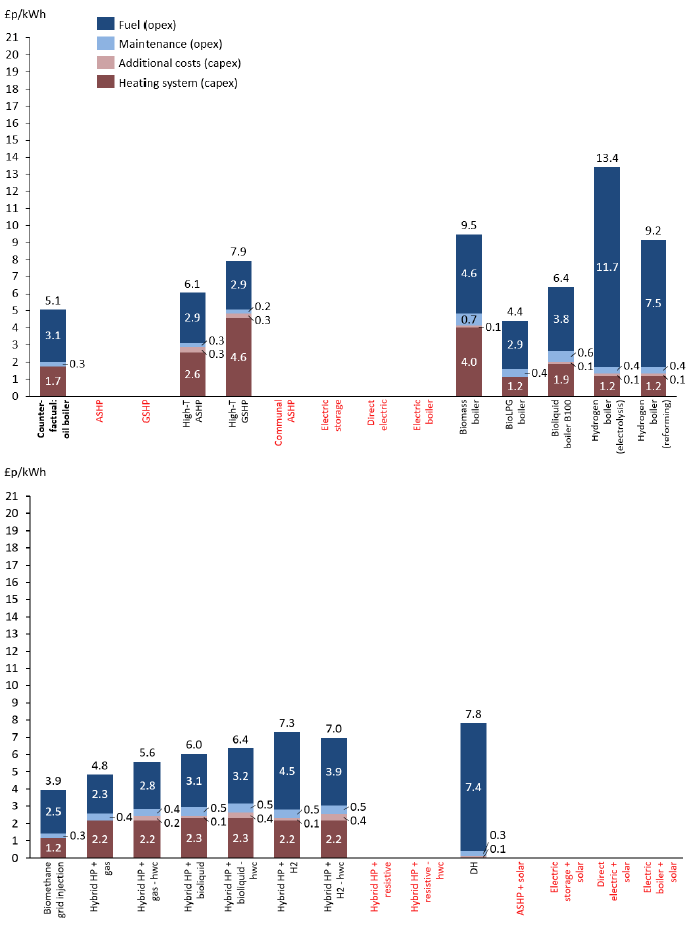
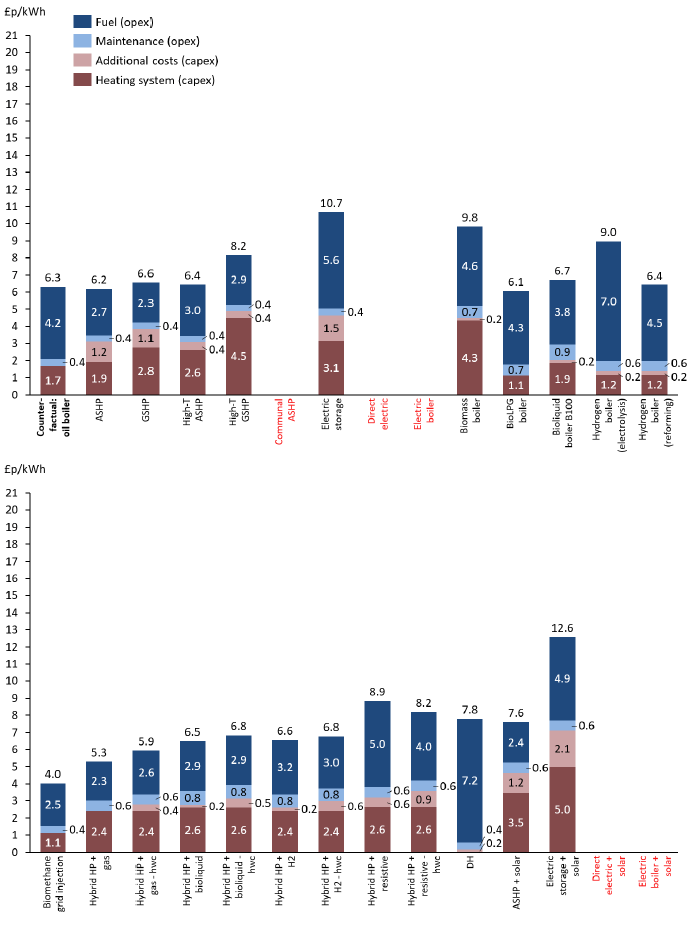
3.10 Archetype 22
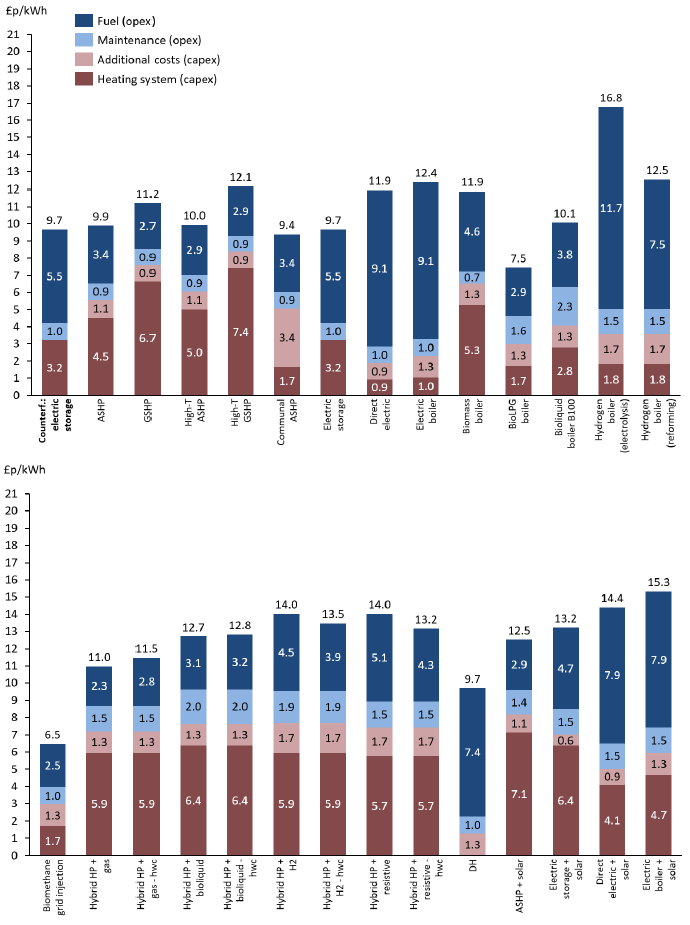
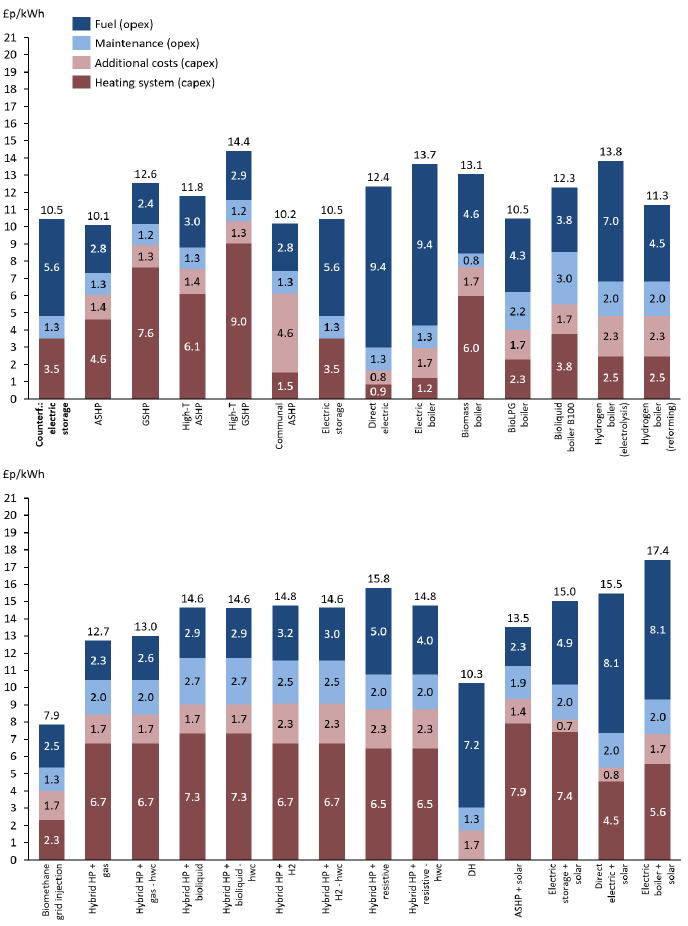
Contact
Email: zeroemissionsheat@gov.scot
There is a problem
Thanks for your feedback